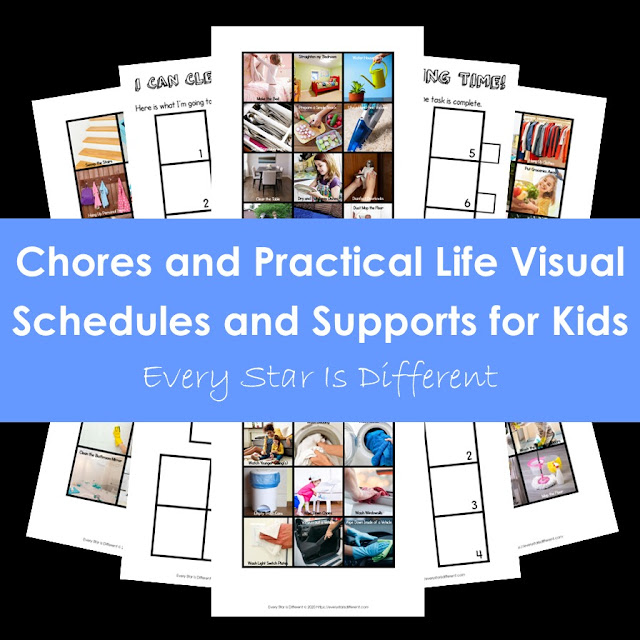Anyone who's considering implementing Montessori at home knows that Montessori floor beds are a big deal.
Whether you have a baby or a toddler they're encouraged as part of a Montessori bedroom.
But what if you have a special needs child with disabilities?
Believe it or not the Montessori floor bed and special needs/disabilities go hand in hand.
The Montessori Floor Bed and Special Needs
What Is a Montessori Floor Bed?
A Montessori floor bed is a bed that is very low to the ground to allow easy mobility for babies and toddlers.
Most often there is no space between the floor and the bed.
Sometimes there is a frame.
Other times only a mattress may be used.
A Montessori floor bed is used to promote independence and encourage a child led environment.
It encourages motor skills and self-paced learning.
A Montessori floor bed is part of a Montessori bedroom set up.
In a Montessori bedroom all furniture and items are to be child sized and at the child's level.
When a bed is low to the ground, the infant or toddler does not need assistance getting on or off the bed and is less prone to injury.
A Montessori floor bed is encouraged for infants and toddlers through age three, but can be extremely helpful with children who have disabilities.
When it comes to safety, independence, and motor skills, a child can never be the wrong age to benefit from a Montessori floor bed if circumstances permit.
Why We Chose to Use a Montessori Floor Bed with our Special Needs Children
Even before we implemented Montessori into any aspect of our lives, both of my daughters used a floor bed.
The idea came naturally to me as we were having significant issues using a crib with each of them.
Princess would lodge her limbs into the sides of her crib between the rails, so much that it would take an adult to loosen and free them.
I was so worried she was going to break a limb.
Every morning I'd wake up to the same situation.
This was when she arrived in our home as a six months old foster child.
The only solution I could come up with was to put her on a mattress on the floor.
It was absolutely amazing to me how this solved our problem and so many others so quickly.
She loved the independence she gained as she was able to move on and off the bed as often as she liked.
No longer did she feel trapped or confined. Most importantly she was safe.
Sunshine would scream for hours EVERY. SINGLE. NIGHT when she was placed in her crib.
In the morning she'd wake up screaming as well.
There came a point when I couldn't take it anymore and realized that the crib may be a PTSD trigger for her.
Sunshine came to our home as a six month old infant from foster care as well.
At first, I placed Sunshine in a typical toddler's bed, but she began freaking out the moment a toy or blanket fell off the bed and would refuse to get it.
We didn't know it then, but due to an abnormality on one of Sunshine's eyes, she is vision impaired and struggles with depth perception.
She also has extreme sensitivities to vestibular input.
Sunshine could not tell how close the floor was from the high bed she was on.
Nor was she great at balancing to figure out just how far down it was.
Once we removed the frame and box spring, she could see where she was in relation to the floor, and had no troubles retrieving her things when they fell.
After we saw such success with the girls, due to behaviors and other issues we ultimately ended up using Montessori floor beds for the boys as well until they were no longer developmentally appropriate.
They seem to be the solution to all of our problems including transitions, destructive tendencies, and a lack of safety awareness.
 |
Here's a picture of Sunshine's bedroom as a preschooler. She requested that her walls be bright yellow like the sun. |
Montessori floor beds are usually recommended for infants and toddlers, but when it comes to children with special needs and disabilities, some can benefit from a floor bed for many years after that.
Consider the following points when deciding if a Montessori floor bed may be right for your special needs child.
Chronological Age
How old is your child?
If your child is currently an infant or toddler, and you're wanting to implement Montessori in the home, the floor bed is a perfect and easy way to start that process.
Using a floor bed allows your infant and toddler to gain independence and a better understanding of the world around them.
For safety reasons, you may choose to put a baby gate in the doorway of the bedroom. This provides reasonable limits and peace of mind.
If you're worried your infant may fall, place a nice soft rug beside the floor bed to prevent accidents.
The only time I would not recommend a floor bed is if your child is hooked up to medical equipment with wires and cords while sleeping.
Unlimited movement around the room may pose a safety risk.
Developmental Age
Your child may be chronologically five or six but developmentally only two or three years old.
This is often the case with children who have developmental disabilities such as autism.
In these cases a child may not be fully ready for a big kid bed even though they may be five or six years old.
There may be a lack of safety awareness, sensory issues, or struggles with muscle tone and gross motor skills.
A Montessori floor bed is perfect in these circumstances and can promote development and independence in so many positive ways.
Emotional Age
There are children who may be cognitively and developmentally age appropriate but are extremely delayed in the area of emotional functioning due to trauma or mental health issues.
At times when the emotional age of the child is delayed, there can be destructive tendencies, a desire to harm one's self or others, rages, and so much more.
When parenting a child like this it is so important to provide a safe place for the child to go and calm down.
A room with a Montessori floor bed is just the thing!
It is soft.
It's low to the ground.
If it's moved or turned over, no harm can be done to the child.
The bed itself can be pushed around the room to provide necessary sensory input when needed.
And yes, we've experienced all of this first hand,
The Montessori floor bed has been a sanity saver for all of us as we have tried to help the girls through the most difficult of times.
It brings great comfort knowing that they'll be safe in their rooms because of the Montessori floor bed.
If you have not considered a Montessori floor bed for your special needs child, I invite you to consider the benefits of it.
I could go on and on about how it has helped each individual child in our home.
It was definitely an inspired aspect of an infant and toddler room AND for those who are still developmentally and emotionally infants and toddlers.
For more Montessori home ideas for special needs, be sure to subscribe to our free newsletter by clicking the link below.
If you enjoyed this post, be sure to check out the posts below.











